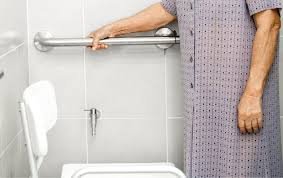The bathroom may be one of the smallest rooms in the house, but it’s also one of the most potentially dangerous—especially for older adults or individuals with mobility issues. Slippery surfaces, sharp corners, and water hazards make bathroom safety a top priority for any household. Fortunately, a few proactive changes can drastically reduce the risk of accidents. Here are the top dos and don’ts for maintaining a safe bathroom environment, including the benefits of walk-in baths.
DO: Install Grab Bars and Handrails
Grab bars aren’t just for hospitals—they’re one of the simplest and most effective ways to improve bathroom safety. Install them near the toilet, in the shower, and by the bathtub. These sturdy supports provide balance and prevent falls, especially for seniors or those recovering from surgery.
DON’T rely on towel racks or sink edges for support. These aren’t designed to bear weight and can easily give way under pressure, leading to serious injuries.
DO: Consider a Walk-In Bath
Traditional bathtubs can be a major fall hazard due to their high sides and slippery surfaces. Walk in baths offer a safer alternative with a low-entry threshold and built-in seating, making it easy to bathe without climbing or kneeling. Many models also come with anti-slip flooring, grab bars, and even hydrotherapy options, combining comfort with safety.
DON’T wait until after an accident to make the switch. If anyone in your household struggles with mobility, it’s better to invest in a walk-in bath proactively rather than reactively.
DO: Use Non-Slip Mats and Rugs
Place non-slip mats inside the shower or tub and use rubber-backed rugs on tile floors to prevent slips. These small additions can provide crucial traction in areas prone to getting wet.
DON’T use regular bathroom rugs or towels on the floor. These can slide easily and cause trips or falls, especially when wet.
DO: Keep the Bathroom Well-Lit
Proper lighting reduces the risk of missteps. Use bright, glare-free lighting and consider motion-sensor night lights to illuminate the way during late-night visits.
DON’T ignore flickering bulbs or dim areas. Poor lighting can cause misjudgments in step height or floor conditions, increasing fall risk.
DO: Maintain Proper Water Temperature
Scalding is a common yet preventable hazard, especially for children and seniors. To avoid burns, set your water heater to a maximum of 49°C.
DON’T rely solely on your own judgment when adjusting water temperature. Use anti-scald devices or thermostatic mixing valves for added protection.
DO: Keep Essentials Within Reach
Store toiletries, towels, and frequently used items within easy reach to reduce bending, stretching, or climbing. Use wall-mounted dispensers for soap and shampoo to keep things organised and accessible.
DON’T store items in high cabinets or on unstable surfaces. Reaching for them can lead to loss of balance or slipping.
DO: Perform Regular Safety Checks
Inspect the bathroom regularly for loose tiles, leaky taps, or worn-out mats. Address issues promptly to prevent minor problems from becoming major hazards.
DON’T postpone maintenance. Even small cracks or leaks can lead to slippery floors or mould growth, which can compromise safety.
A safe bathroom is a more comfortable, accessible, and independent space for everyone. Small changes like installing grab bars, using non-slip mats, or upgrading to a walk-in bath can make a big difference. Prioritise prevention now to avoid problems later—because when it comes to bathroom safety, an ounce of prevention is truly worth a pound of cure.
Image attributed to JTSpas.co.uk
